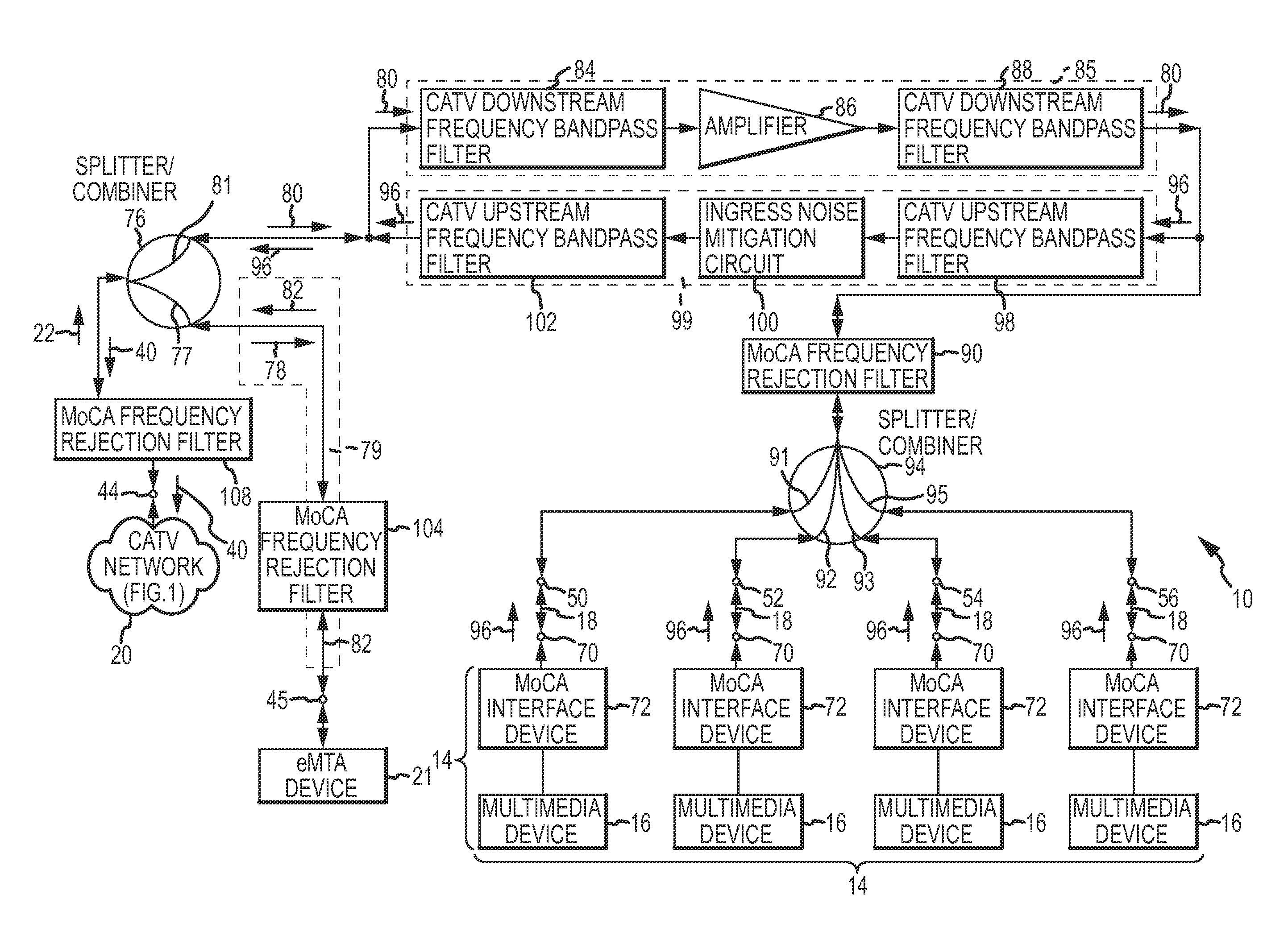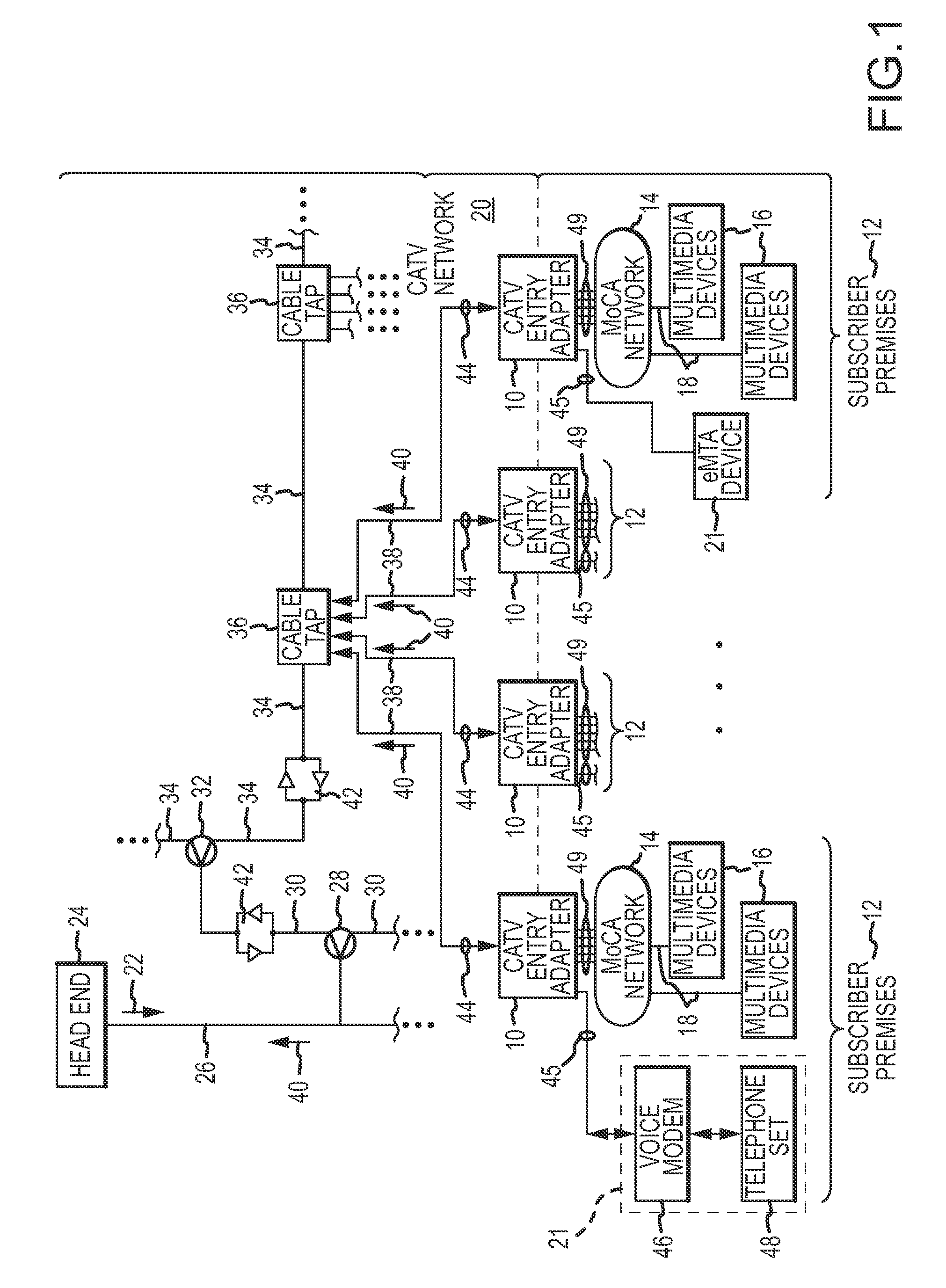CATV entry adapter and method for preventing interference with eMTA equipment from MoCA Signals
a technology of emta equipment and catv entry, which is applied in the field of catv entry adapters and methods for preventing interference with emta equipment from moca signals, can solve the problems of adversely affecting the performance of the moca network affecting the privacy and security of information, and affecting the performance of the moca interface device in the other subscriber premises, so as to enhance the strength of the moca signal communicated, without degrading
- Summary
- Abstract
- Description
- Claims
- Application Information
AI Technical Summary
Benefits of technology
Problems solved by technology
Method used
Image
Examples
Embodiment Construction
[0034]A community access television or cable television (CATV) entry adapter 10 which incorporates the present invention is shown generally in FIG. 1. The CATV entry adapter 10 is located at or in a CATV subscriber's premises 12 and forms a part of a conventional MoCA in-home entertainment network 14. Multimedia devices 16 are interconnected by the MoCA network 14 in the subscriber premises 12. The multimedia devices 16 communicate multimedia content or MoCA signals between one another using the MoCA network 14. The MoCA network 14 is formed in part by the preexisting coaxial cable infrastructure (represented generally by coaxial cables 18) present in the subscriber premises 12. Examples of multimedia devices 16 are digital video recorders, computers, data modems, computer game playing devices, television sets, television set-top boxes, and other audio and visual entertainment devices. In general, the multimedia devices 16 constitute active subscriber equipment.
[0035]The CATV entry ...
PUM
 Login to View More
Login to View More Abstract
Description
Claims
Application Information
 Login to View More
Login to View More - R&D
- Intellectual Property
- Life Sciences
- Materials
- Tech Scout
- Unparalleled Data Quality
- Higher Quality Content
- 60% Fewer Hallucinations
Browse by: Latest US Patents, China's latest patents, Technical Efficacy Thesaurus, Application Domain, Technology Topic, Popular Technical Reports.
© 2025 PatSnap. All rights reserved.Legal|Privacy policy|Modern Slavery Act Transparency Statement|Sitemap|About US| Contact US: help@patsnap.com



